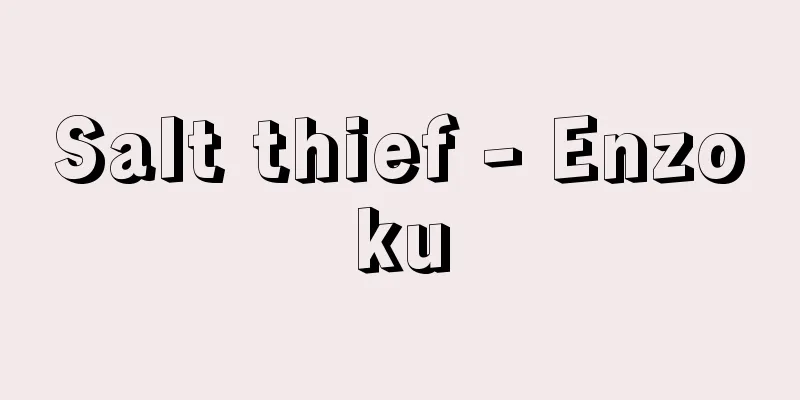Salt thief - Enzoku

|
...A group of Chinese salt smugglers. They are also called salt smugglers or salt bandits. During the Tang Dynasty, from the second half of the 8th century onwards, Exclusive Once the system was implemented, and especially during the Song Dynasty when a detailed system with severe penalties was established, the people were generally forced to use expensive, inferior salt. *Some of the terminology that refers to "salt bandits" is listed below. Source | Heibonsha World Encyclopedia 2nd Edition | Information |
|
…中国,塩の密売者の集団。塩梟(えんきよう),塩賊などとも呼ばれる。唐代,8世紀の後半以後,塩の専売制が実施され,とくに宋代になって厳重な刑罰をともなって精密な制度ができあがると,民衆は概して高価で粗悪な塩を強制されることになる。… ※「塩賊」について言及している用語解説の一部を掲載しています。 出典|株式会社平凡社世界大百科事典 第2版について | 情報 |
>>: Chlorination IIR - Ensoc IIR
Recommend
Izumi Sensuke
...It is a disease similar to scarlet fever, and ...
Kishibe Tile Kiln - Kishibe Tile Kiln
...The recently excavated Nishigamo tile kiln com...
Ibn Rushd
1126‐98 A leading philosopher and physician in the...
Mount Kannabi
(written as "Kamunabiyama") [1] [noun] A...
Munari, B. (English spelling) MunariB
…Finland's Jansson, Denmark's Petersen, E...
glottic cancer
...It is said that smoking, drinking, vocal overu...
Gravestone - Star
Unlike tombstones, which are erected in front of ...
Tecticeps japonicus (English spelling) Tecticeps japonicus
...The four-spotted ground beetle Sphaeroma retro...
Celastrus stephonotifolius (English spelling) Celastrusstephonotifolius
…[Murata Gen]. … *Some of the terminology that me...
Spotted planthopper - Spotted planthopper
...It is distributed in Honshu, Shikoku, and Kyus...
Sakai Tadakiyo - Please enjoy
A fudai daimyo (feudal lord) in the early Edo per...
Iijima Pass - Iijima Pass
A medieval checkpoint was established in Iijima al...
Hong Shen (English spelling)
[Born] Guangxu 20 (1894) [Died] 1955 Chinese playw...
clupeine
…A general term for a group of water-soluble simp...
Superconducting generator - chodendohatsudenki (English spelling)
A generator that uses a superconducting magnet for...









